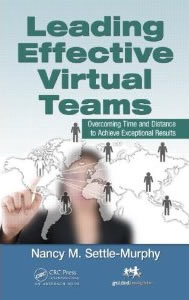“Whoa! What the %^&$ is happening here? Let’s knock it off right now!”
Clearly, this is not the best way to call a time out when a meeting spirals out of control, especially when higher-ups are around the table. But remaining silent won’t stop a dysfunctional meeting in its tracks, either.
Whether you’re the meeting leader or fellow participant, there are a few simple ways you can get a meeting back on track that won’t jeopardize your career. I invited Jonathan Ralton, a Professional Services Process, Strategy, & Knowledge Leader, to join me in writing this edition.
Let’s take this hypothetical high-stakes meeting as an example. A group of senior managers for a global pharmaceutical has to make a go/no-go decision about continuing with a second clinical trial for a promising new drug after the first one yielded disappointing results. The chief scientist is determined to go ahead with a new trial, while the CFO is adamant that they must pull the plug before they lose even more money. The CEO asks pointed questions about the effect on short-term and long-term profitability, while the sales VP claims that once their leading competitor gets FDA approval, the company’s entire investment will be irretrievably lost. The conversation goes around in circles for what seems like hours, with increasingly loud voices and no shortage of unfounded claims and personal attacks.
What’s really happening?
- The Litany of Grievances: Everyone makes a case for their position being the only one that makes sense, repeating the same statements and interrupting others when they’re speaking to counter their claims, listing all of the reasons why. Again. And again.
- Hearing without Listening: People eagerly wait for others to pause for air before jumping in to give their side, not bothering to respond or discuss what they just heard.
- Tension Mounts and Frustration Builds: As everyone becomes visibly irritated, voices become shriller and louder, body language gets defensive, and words and tones become snarky.
- Making Uncharitable Assumptions: As people become more intent on winning their argument, people start making unfounded assumptions like: “The Chief Scientist sees our company as a playground to try out ideas instead of one that must turn a profit.” “The CFO doesn’t understand why these investments are crucial to our success.” “The sales team is just trying to cause drama because they haven’t made their numbers in six quarters.”
- Endless Loops: Anger, fear, frustration, and anxiety start driving the conversation instead of logic. People make the same points repeatedly, hoping this will change minds.
- Resolution or Continuation: Sometimes people get worn down and agree to any decision. Other times someone calls for the meeting to continue at a later date. Rinse and repeat.
Examples:
- “I’m hearing many of the same statements made multiple times. Let’s capture these statements so they’re visible to everyone to make sure everyone feels heard and there’s no need to repeat them.”
- “I’ve noticed that people are jumping in before people stop talking, which makes it seem like people may not be hearing each other. How about if we take a few moments of silence to write down the statement we most want to share, and then we’ll go around the room one at a time and ask someone to paraphrase what they have heard to make sure we all understand it the same way before we open it to discussion.”
- “I’m sensing tension and frustration in the room right now. How about if we take a three-minute stretch break and then go around the room to give each person a minute to summarize their position before we ask everyone to weigh in?”
- “We don’t seem to be any nearer to making a decision than we were two hours ago. Let’s pull back a minute to think about what’s stopping us from making a decision today.”
- “I’m noticing that some people have been doing most of the talking while others may not have felt comfortable contributing. Let’s give everyone a chance to speak, starting with the people who have not had the space to voice their opinions today.”
Why is naming behavior out loud so effective?
- Disrupting the Pattern: If you’re old enough, you might remember how annoying it is to hear part of a song repeat when the record player needle gets caught in the groove of an album. Just like lifting up the needle, by naming dysfunctional behavior, we’re disrupting an annoying pattern that allows everyone a reset.
- Common Ground: Acknowledging the shared experience creates a sense of unity rather than reinforcing adversarial positions.
- Emotional Regulation: Calling out the situation in clear, descriptive, neutral terms can help to de-escalate heightened emotions.
- Time for Reflection: By having the behavior named, people can take a step back and observe their own behavior more objectively.
- Making it Safe: By demonstrating that it’s acceptable to openly and honestly discuss interpersonal dynamics, you help create a safer space for honest dialogue.
- Refocusing on Common Goals: This helps to reframe the conversation such that people can reflect how their positions do (or may not) support shared goals.
What are the downsides of calling like you see it?
- You may not have the credibility or agency to intervene. If you’re the official meeting leader, it’s a lot easier than if you’re a participant. It’s harder to intervene if the ones being the most recalcitrant hold senior positions, or if clients are present. But it’s certainly not impossible, especially if everyone else is sitting on their hands. Chances are, people will thank you later for throwing out a lifeline.
- You may be the only one who’s bothered by the behavior. If this is the case, others may wonder why you felt you had to step in. You might try to precede your statement with something like: “Looking through my lens, here’s what I am noticing…” so you’re reminding people that this is your perspective, rather than an absolute truth.
- You may be inadvertently shaming or embarrassing someone by singling them out. Sometimes we do need to name names (e.g., “James and Linda, it seems that you…”) but other times our intervention can be just as effective if we speak in generalities (e.g. “I notice that some of us have been making the same arguments…”).
- You have cut off a crucial conversation without realizing it. It could be that these differences have been brewing a long time and needed to be aired before any progress can be made, and you have abruptly stopped an important exchange.
- The ensuing conversation may feel awkward. Especially if this is a group not used to speaking openly, people may feel reluctant to rejoin the conversation, especially if they’re not clear whether their behavior contributed to the problem.
- Turning a meeting around can take more time than you have left, especially if there are still agenda items you’ve haven’t touched. Then again, if you don’t intervene you won’t get to those topics anyway. One option might be to suggest that the relevant participants take the conversation offline and then let the group know if/when their differences were resolved.
- You may not know where to take it next. It’s easy to call out bad behavior, but harder to come up with a solution in the moment. Before intervening, try to have a suggestion or two in mind as to how to get the meeting back on track, and be open to others’ suggestions as well.
Having team principles and norms in place up front makes this kind of intervention much easier. By asking participants for a solution, they’re much more likely to adhere to the agreed-upon norms.
For example, if people are talking over each other, you can say something like: “Let’s take a step back and remember our norm about active listening. What does this sound and look like to all of you? What can we all do now to make sure our behavior reflects this norm?” Or “At the start of the meeting, we agreed to make space for all voices. There are a few people we haven’t heard from yet. What can we do to balance participation better?”
Naming dysfunctional dynamics can be effective beyond just group meetings. You can do this with almost any conversation, work-related or personal. Use this downloadable de-escalation tip sheet to help. (Caution: It may not play well with teens. Ask me how I know.)
Calling out unproductive conversations may not feel comfortable or easy at first. Practice by trying role-plays with a friend or colleague before using it with a group where this kind of dysfunctional behavior is the norm. The more you use it, the easier it gets for you, and the easier it will be for everyone else to follow suit. Chances are, everyone around the table will thank you for it.
Links
Downloadable resources from Guided Insights
- De-escalation triage model tip sheet to help you recognize, assess and intervene when meetings are in danger of being derailed due to unproductive conversations, regardless of your role.
- To give you and your team a head start on creating draft principles, download this checklist for creating strong principles and meaningful team norms.
My past Communiques
- What’s Worse: Principles Without Scruples, or Scruples Without Principles?
- Confronting Conflict with Courage in Remote Teams
- Bracing for Giving (and Getting) Difficult Feedback When You Can’t See Eye to Eye
- How shared principles finally got a leadership team unstuck
- Galvanize global virtual teams with clear operating principles
Article that inspired this newsletter – The Art of Calling Out Room Dynamics by Csaba Okrona




